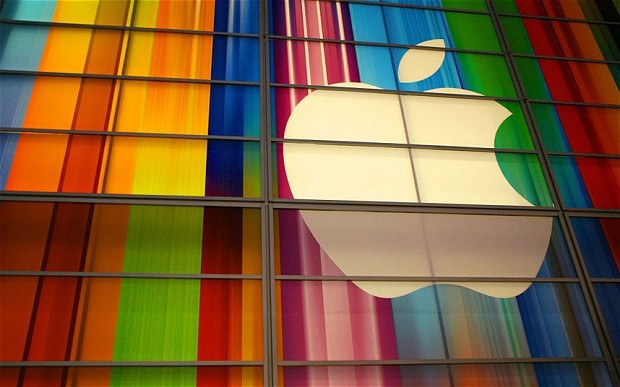Apple and Google: Thought Locally, Act Globally
 Three years ago, Apple's sales in the zone of Chinese cultural and economic influence for the first quarter amounted to $ 9.29 billion, or 20% of the total [1].
Three years ago, Apple's sales in the zone of Chinese cultural and economic influence for the first quarter amounted to $ 9.29 billion, or 20% of the total [1].During this period, Apple's sales growth in China reached 320%. The second fastest growing reporting segment was Japan, with a growth rate of 187%. The third was the European segment, the figure in which was 70%, and the fourth was the American segment with 53.5%. The rest of Asia and Oceania showed a minimum recovery of 4.1%.
While total sales increased significantly, total revenue from the US segment and the retail sector (as most stores are located in the United States) fell from 51% in the first quarter of 2011 to 42% in the first quarter of 2014 [ 2]. An increase in China’s share of 11 points [in the overall sales picture], therefore, can be viewed mainly as damage to the United States. Since the performance of the American segment does not decline, it would be more appropriate to assume that most of the growth over the past three years has been in China.
')
The chart below reflects both absolute and relative sales levels of reportable segments.

Please note that in the above chart I also included the regional distribution of Google revenue [3]. This is partly done in order to give a comparative assessment of Apple’s performance, partly to see if other companies are copying Apple’s methods for expansion outside the United States.
In particular, Google is not represented on a large scale in the Chinese market and the only regions that can be detailed are the United States, the United Kingdom and the Other regions. Therefore, we will focus on analyzing the dependence of each company on the US market.
The percentage of Google’s revenues in the US sector actually fell from 47% to 43%, but it is worth noting that the decline is not only slower than that of Apple, but the overall dependence of Google’s income on the US market is higher than that of Apple.
This is striking because the concentration of Apple users (assessed by the market share of Apple's diverse products) in the US is likely to be higher than the distribution of Google users.
In other words, Google is widely popular all over the world (except for search services in China, Korea and Russia), but its users and, consequently, revenues are highly concentrated.
Notes:
[1] Taking into account sales figures in China, total revenues amounted to "almost 10 billion dollars"
[2] 60% of all Apple Store stores are located in the United States.
[3] the indicator does not include values for frozen areas, in particular, for work with Motorola
Source: https://habr.com/ru/post/236477/
All Articles